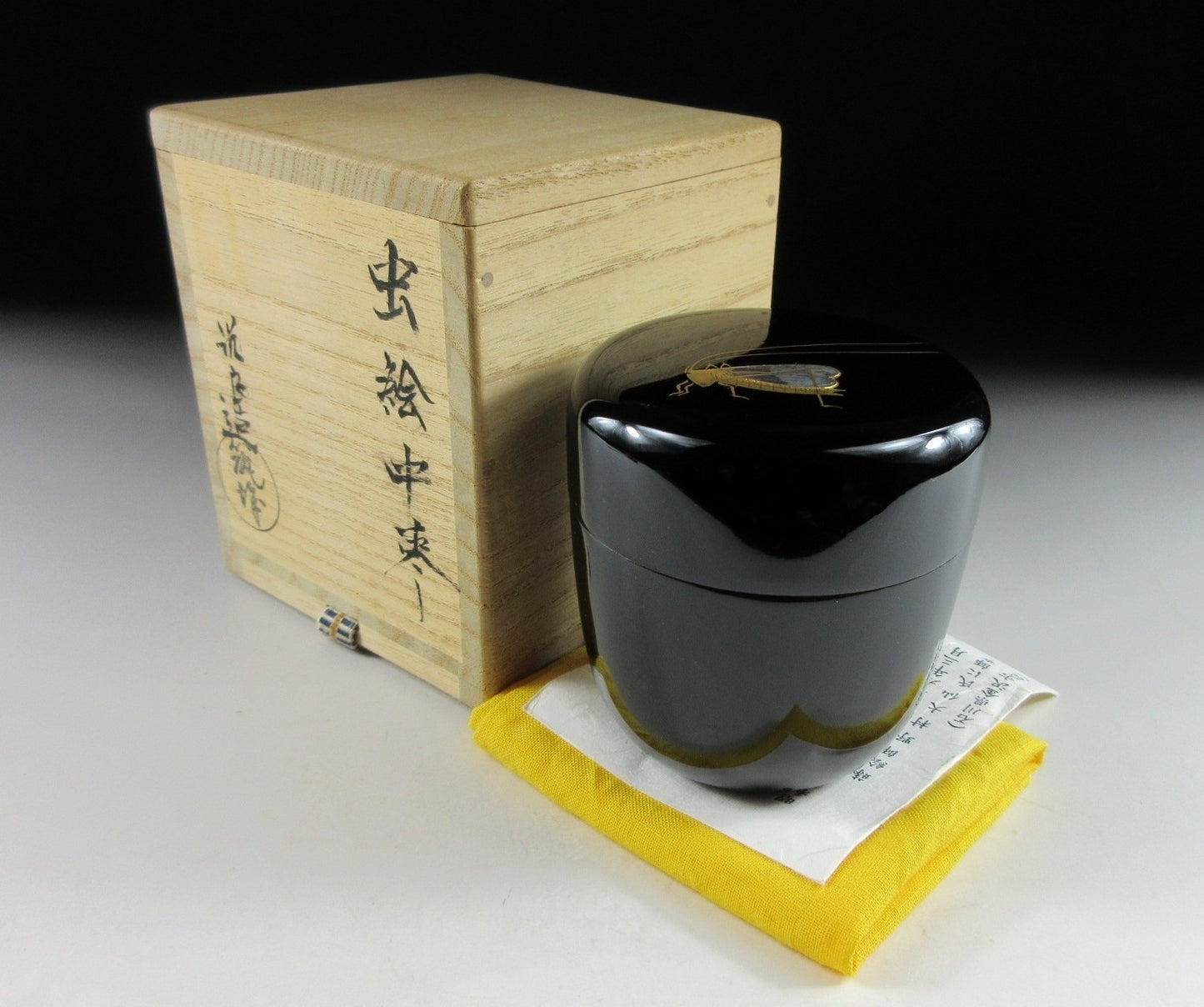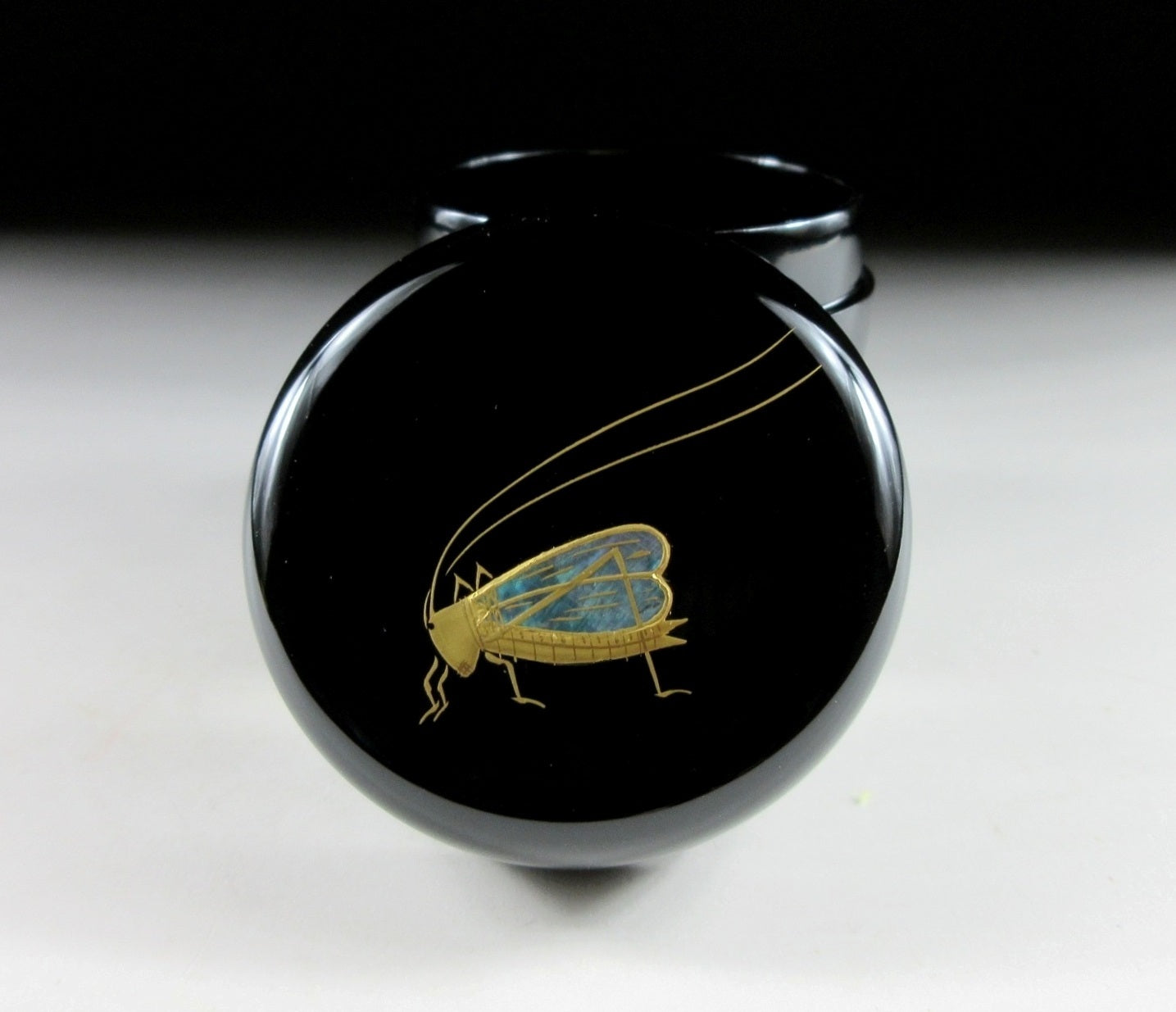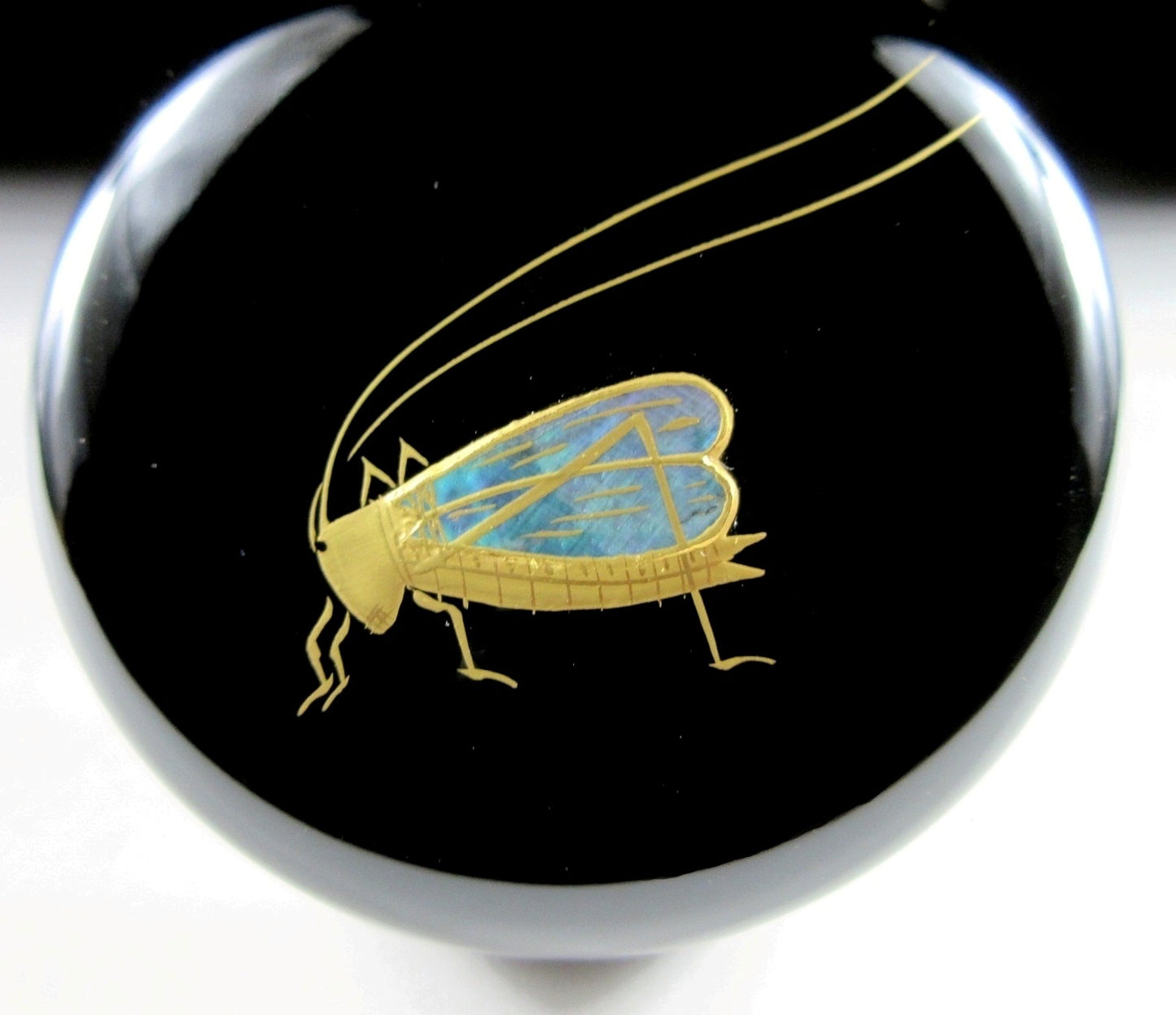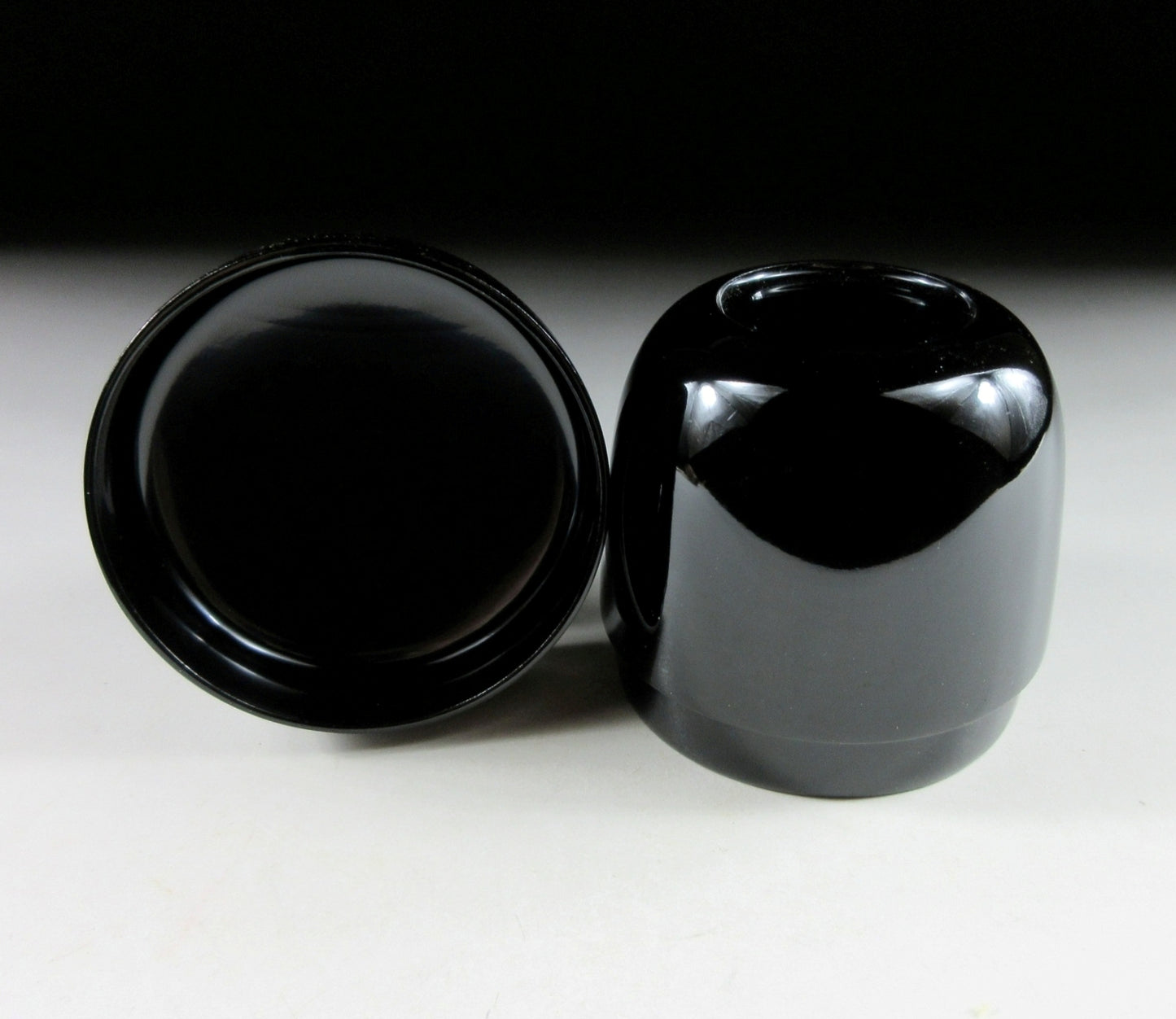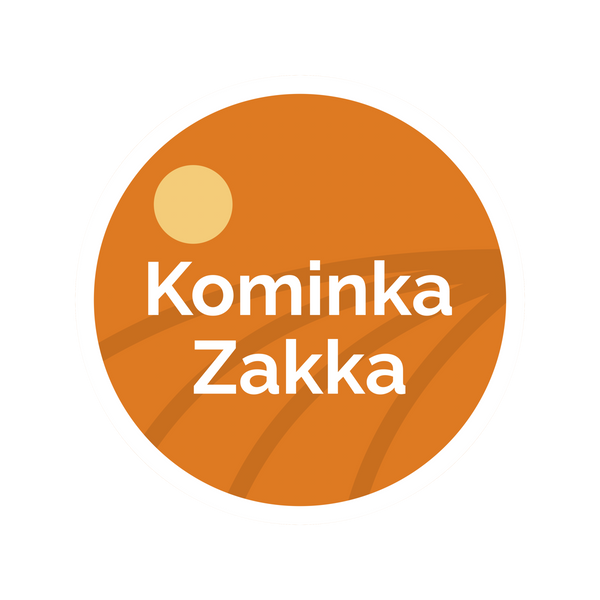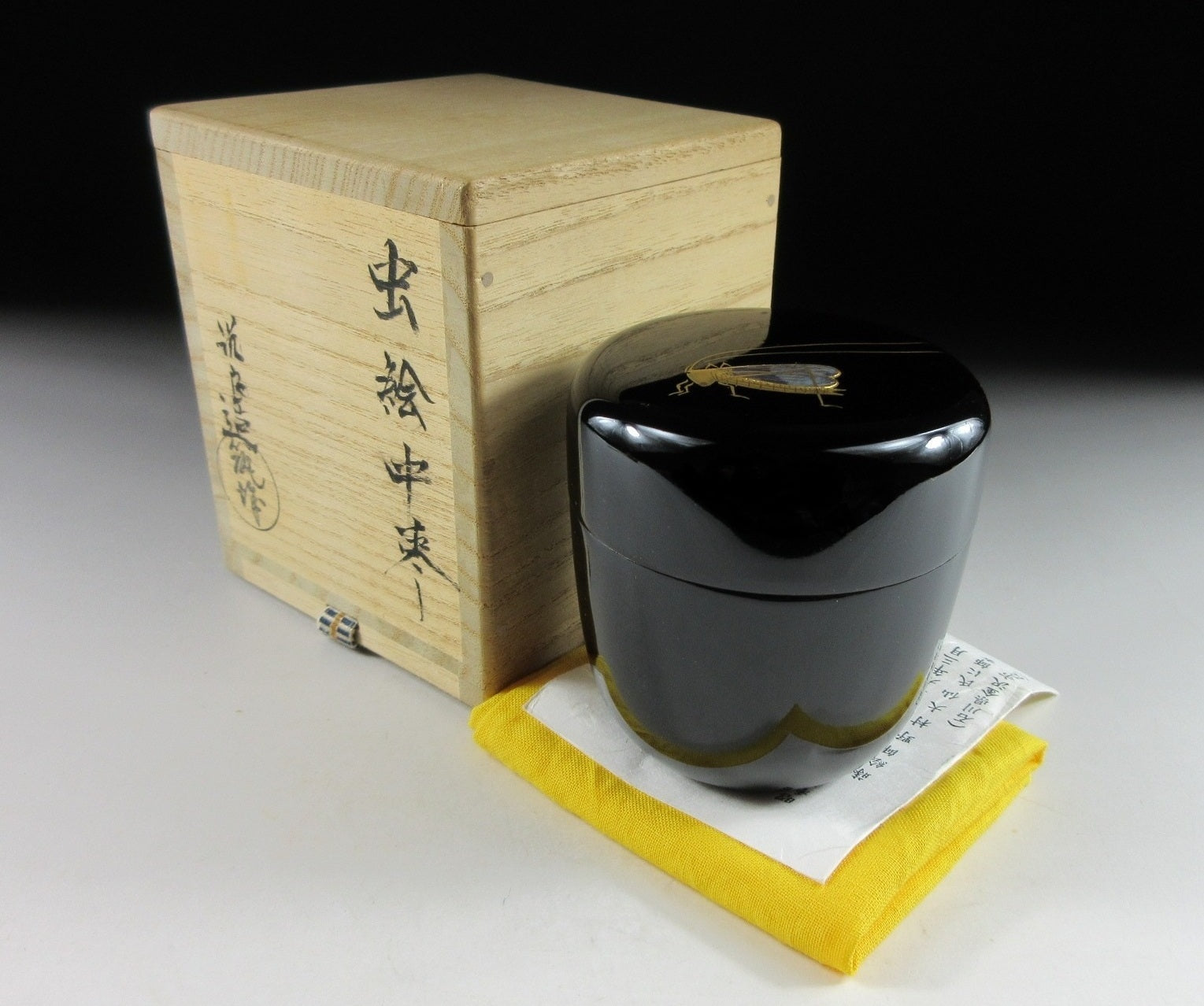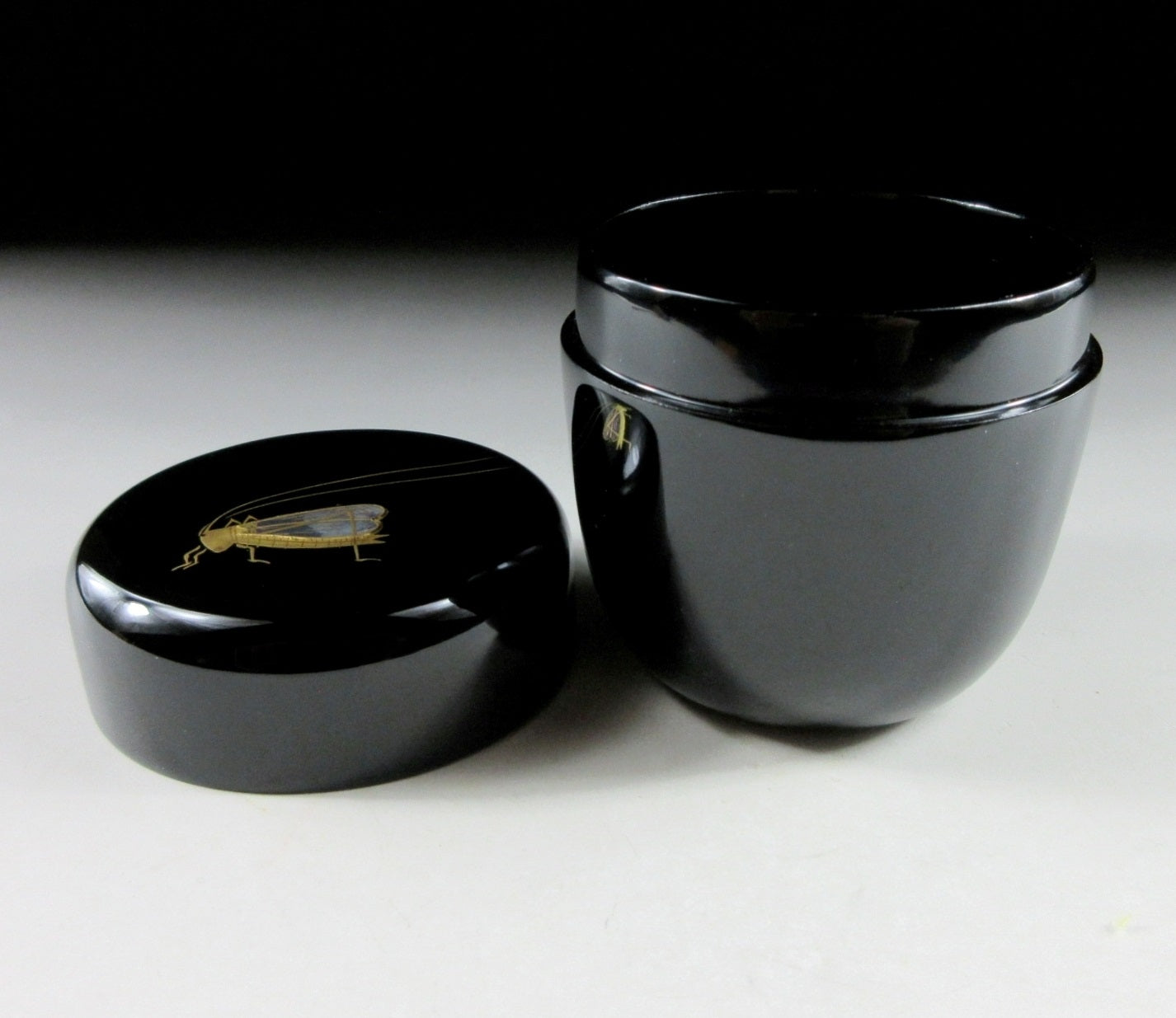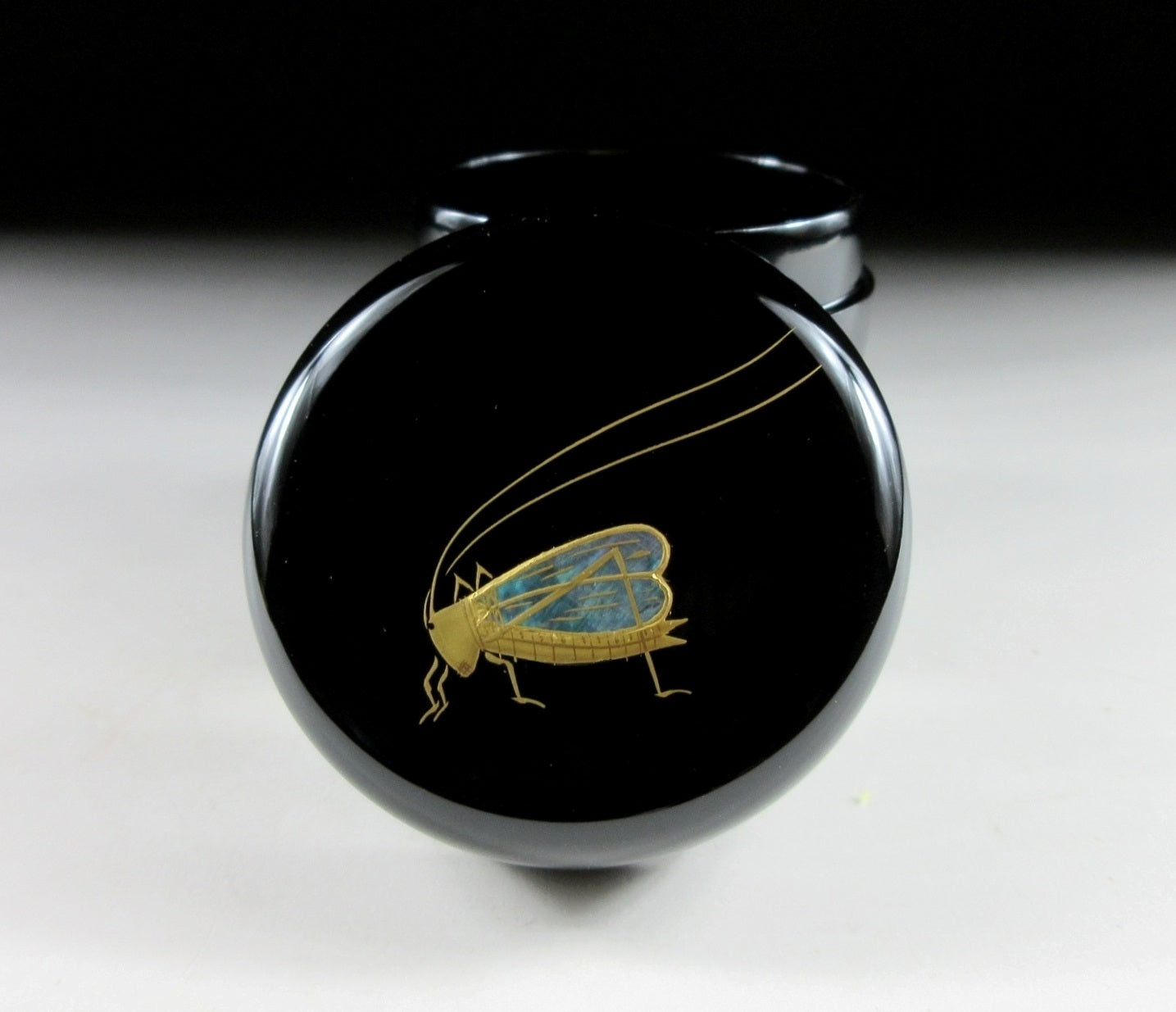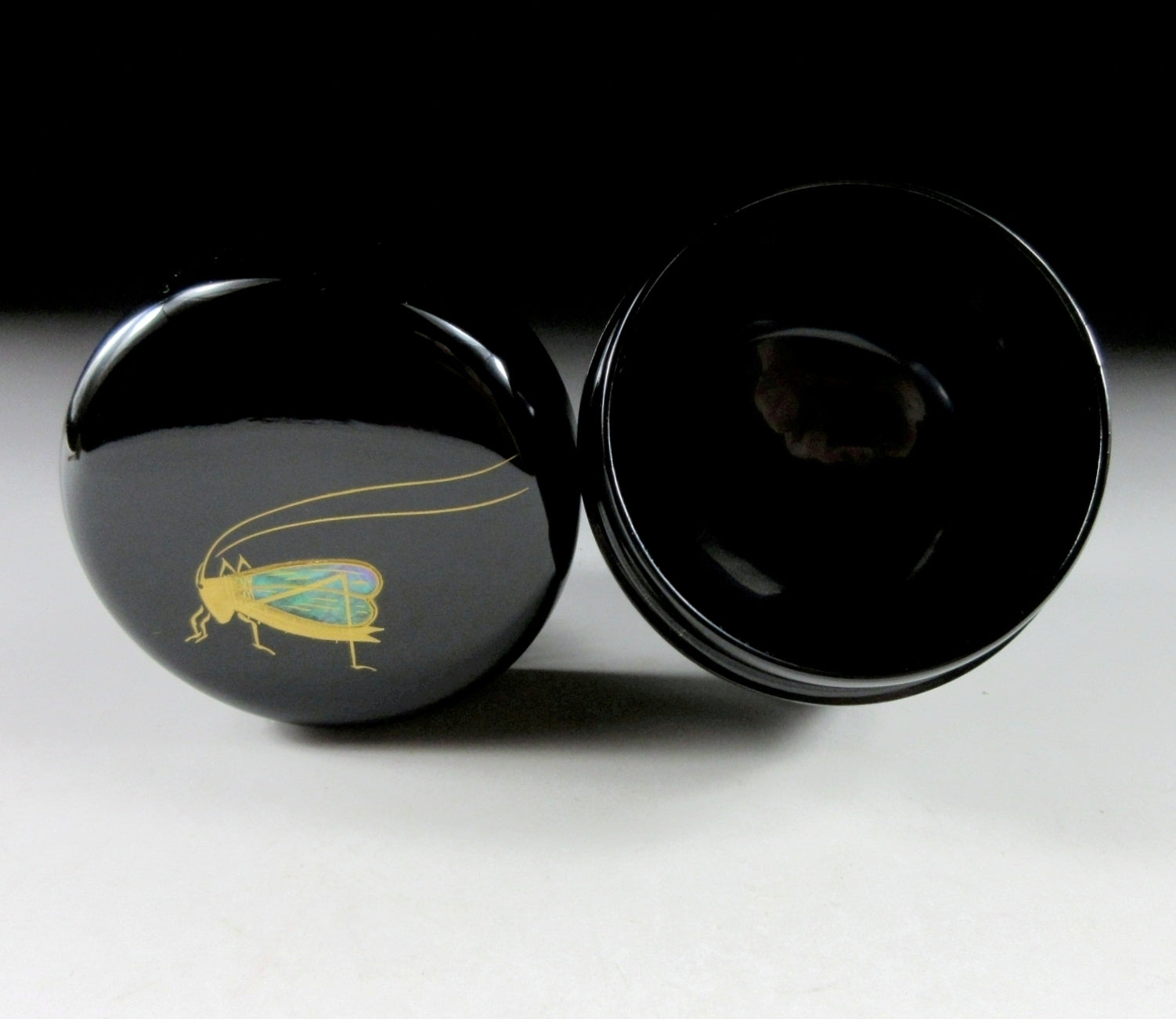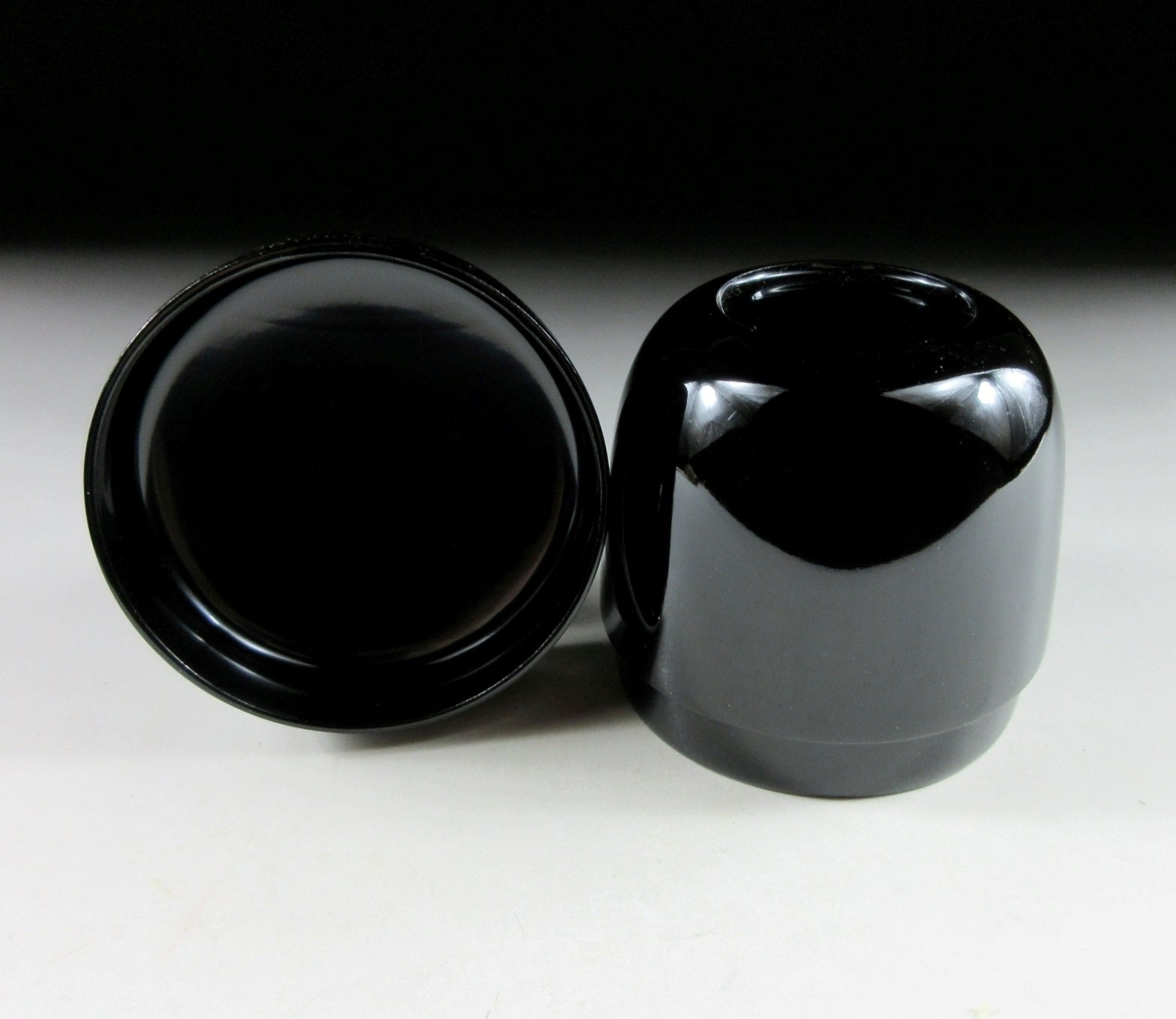Kominka Zakka
Tsukushiro Tsukuryo Yamanaka Natsume
Tsukushiro Tsukuryo Yamanaka Natsume
Couldn't load pickup availability
*SHIPPING OPTIONS VARY DEPENDING ON THE DESTINATION, PLEASE SCROLL TO THE END OF THIS LISTING FOR MORE DETAILS.
This listing is for an attractive natsume made around 10-20 years ago by Tsukushiro Tsukuryo. It is made of wood and decorated with a makie and mother of pearl depiction of a bell cricket. Bell crickets, or suzumushi as they are known in Japanese, signify the change in seasons from summer to autumn. From the end of summer to autumn, suzumushi make a pleasant chirping sound like a bell. Bell crickets are often viewed with a sense of nostalgia during quiet autumn nights. It comes with its original signed wooden storage box, as well as a yellow wrapping cloth for when the item is not in use. It also comes with a Japanese language profile paper about the craftsperson.
Tsukushiro Tsukuryo (b.1951) is a Yamanaka lacquerware artist and makie specialist from Ishikawa Prefecture. He started studying to be a lacquerware artist when he was 16 years old, and he apprenticed under two master craftsmen. In 1967 he began studying lacquer techniques under Konaka Juzan, four years later he became a pupil of Kaga makie master Nomura Daisen. In 1974 he joined the Craft Design Department of the Kanazawa College of Art, finally becoming independent as a makie artist in 1975. From 1979 he began to focus on producing high quality tea utensils for the tea ceremony. He currently resides in Yamanaka-cho and is active exhibiting his works. **Fellow sellers, this information was researched by Kominka Zakka and CANNOT be used in your own listings.
Yamanaka nuri refers to lacquerware produced in Ishikawa Prefecture. Echizen craftsmen from Fukui began producing lacquer pieces in this area as far back as the late 1500s. In the 1700s focus shifted towards producing wares for visitors to Yamanaka onsen. This also helped to promote the hot springs, so demand for lacquerware also increased. New techniques for lacquering were developed in the 1800s, and the arrival of the makie technique from Aizu, Kyoto and Kanazawa brought new changes to production in the area. Local craftsmen were also introduced to using a hand turned wood lathe to decorate the surface of their wares. Various patterns were developed and this became the most distinctive characteristic of Yamanaka lacquerware. The area flourished and it became known for its tea ceremony utensils and other fine lacquerware. Today there are over thirty lacquerware studios in the area, including Living National Treasure Kawakita Ryozo. **Fellow sellers, this information was researched by Kominka Zakka and CANNOT be used in your own listings.
Makie refers to a crafting technique in Japan from presumably the Nara period. Craftsmen sprinkle gold or silver metal powder over successive layers of lacquer before it dries. Traditionally pure gold powder, pure gold flakes, and pure silver powder were used to complete motifs on lacquerware. The process of applying gold or silver powder requires both time and skill. At first the craftsman sketches out the design. He or she then adds charcoal powder to the base of the relief, and then a layer of urushi lacquer. Gold or silver powder is sprinkled over the wet lacquer, which acts as an adhesive. The surface is polished and then the process is repeated over and over until a beautiful raised pattern appears.
Sizes
Box: H.10cm (3.9”) x 8.7cm (3.4”) x 8.7cm (3.4”)
Natsume: H.7.7 (3”) x Dia.6.7cm (2.6”)
Condition
It’s in very good condition with almost no signs of wear.
THESE ARE SHIPPING ESTIMATES BASED ON THE CURRENT GLOBAL SITUATION
**Germany, France, Greece, Spain, Poland, Austria, Slovakia, Lithuania, Slovenia: NO SHIPPING. Very strict and expensive packaging laws in place and we are not licensed to send products to these countries. We have no plan to register at this time because the process is in some cases very expensive and complicated, plus each country has its own set of regulations and application process.
**USA: EMS Express (approx. 7-15 days). Combined shipping available (please send us a message) but please note that the price does not get cheaper for Airmail or EMS, in fact it becomes more expensive. If you want to save money and don't mind a very long 3 month wait, request sea mail (11-12 weeks depending on processing and backlogs at destination ports). Inexpensive Airmail Small Packet option unavailable.
**UK and Canada: EMS Express (approx. 7-15 days). Combined shipping available (please send us a message) but please note that the price does not get cheaper for EMS, in fact it becomes more expensive. If you want to save money and don't mind a very long 3 month wait, request sea mail (11-12 weeks depending on processing and backlogs at destination ports). Inexpensive Airmail Small Packet and regular Airmail is currently unavailable.
**Australia, New Zealand, Switzerland, Norway: Airmail ePacket (approx. 15-28 days). Combined shipping available up to 2kgs for Airmail ePacket (please send us a message).
**Asia: Airmail ePacket (approx. 15-21 days). Combined shipping available up to 2kgs for Airmail ePacket (please send us a message).
**Russia: No shipping methods available.
Share
